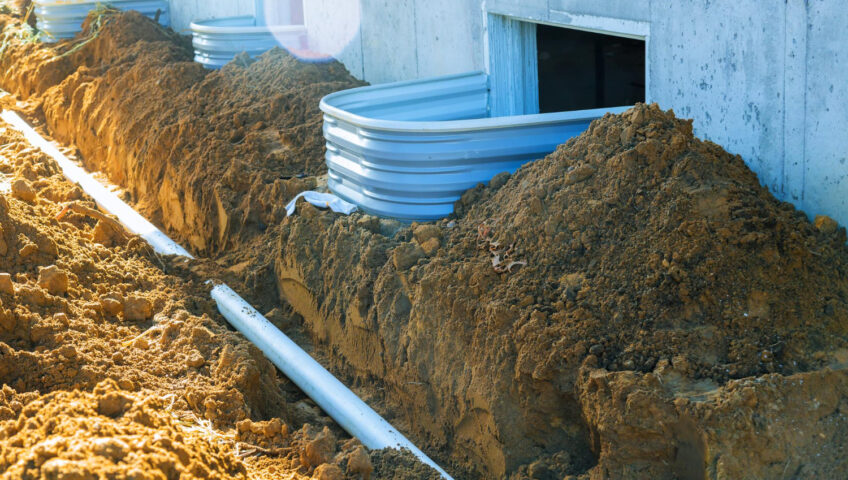Building a new home or commercial property in Surrey, BC, often involves installing a septic system, especially in rural areas. A septic system is crucial for handling wastewater when you are not connected to a city sewer system. Properly installing a septic system ensures that waste is treated safely and effectively.
Navigating the approval process for a septic system can seem complicated, but understanding the basics can help. Knowing what to expect and how to prepare makes the process smoother and less stressful. Our experience in designing and installing septic fields ensures that your system will not only meet all regulations but also be environmentally friendly.
In this article, we will break down the septic system approval process, highlight common challenges, and offer tips to help you get through the process efficiently. Installing a septic system may seem daunting at first, but with the right knowledge and support, it can be straightforward and manageable.
Understanding Septic System Basics
Septic systems are crucial for treating wastewater in areas not connected to a public sewer system. They consist of a septic tank and a drain field. The septic tank collects and holds waste from your home, separating solids from liquids. Bacteria in the tank break down the solid waste, which settles to the bottom as sludge. The liquid portion, now known as effluent, exits the tank into the drain field.
The drain field consists of perforated pipes buried in gravel-filled trenches. These pipes distribute the effluent evenly, allowing it to seep into the soil. The soil acts as a natural filter, removing harmful bacteria and other pollutants. Over time, treated water re-enters the groundwater cycle, ensuring safe and effective wastewater management.
Understanding the capacity and limitations of your septic system is essential. Regular maintenance is necessary to keep it functioning properly. Pumping the septic tank every three to five years helps remove any accumulated sludge. Additionally, be mindful of what goes down your drains; avoid disposing of non-degradable items like wipes and grease, as they can cause blockages and damage your system.
Septic systems should comply with local regulations, ensuring they are environmentally friendly. Knowing the basics can help you understand how to care for your system and prevent potential problems. With proper maintenance and a well-designed system, you can ensure effective and sustainable wastewater treatment.
Steps in the Septic System Approval Process
Getting approval for a septic system involves several key steps. The first step is site evaluation. A professional will examine your property to determine if it is suitable for a septic system. They will assess soil type, groundwater levels, and proximity to water bodies. This evaluation ensures that your site can support a septic system without posing environmental risks.
Next, you will need to design the septic system. A licensed designer or engineer will create plans based on the site evaluation. These plans include the size and layout of the septic tank and drain field, ensuring they meet local regulations. The design must account for your property’s specific needs and any unique environmental factors.
Once the design is complete, you must submit it to the local health department for approval. They will review the plans to ensure they comply with all regulations and standards. This step may include additional site inspections. If approved, you will receive a permit to proceed with the installation.
After obtaining the permit, it is time to install the system. Hiring an experienced installer is crucial for this stage. They will follow the approved plans and complete the installation according to local codes. Once installed, the system undergoes a final inspection by the health department to ensure it functions correctly and safely.
Completing these steps accurately and efficiently can help you navigate the approval process with ease. Ensuring each phase meets regulatory standards is essential for a successful septic system installation.
Common Challenges and How to Overcome Them
Navigating the septic system approval process can come with its share of challenges. One common issue is the quality of the soil. Certain types of soil, like clay or areas with a high water table, may not drain well. This can make it difficult for the septic system to function properly. To overcome this, you may need to enhance soil conditions by importing suitable soil or using alternative septic technologies like sand filters or mound systems.
Another challenge is meeting local regulations. Different regions have specific rules and codes for septic systems, and navigating these requirements can be daunting. Consulting with local experts ensures your system design meets all the necessary criteria. It’s crucial to stay informed about any changes in local regulations to avoid delays or rejections in your approval process.
Failing initial inspections can also be a common setback. To avoid this, conduct a thorough site evaluation before submitting your plans. Engage professional help to ensure every detail of your system design is accurate and compliant. Preparing well can save time and prevent costly reworks.
Limited space on your property may also present challenges. Squeezing a septic system into a small area can be tricky. Solutions include using compact septic systems or vertical configurations. Proper planning and innovative design approaches can help you optimise available space while ensuring efficient waste treatment.
Tips for a Smooth Approval Process
Navigating the septic system approval process can be simpler with the right tips and guidance. First, always conduct a thorough site evaluation. Understanding your property’s specific conditions helps you design a septic system that meets all regulations and functions effectively. Knowing soil types and groundwater levels provides a solid foundation for your plans.
Next, work closely with local authorities. Establishing a good relationship with the health department and other governing bodies can streamline the approval process. Keeping open lines of communication ensures you stay updated on any regulation changes or specific requirements, reducing the risk of delays.
Hiring experienced professionals is crucial. Enlist the help of qualified designers, engineers, and installers to ensure your septic system meets all local standards. Experienced professionals bring valuable insights and can foresee potential issues before they become problems.
Regularly check and double-check your paperwork. Ensure all forms, plans, and documents are filled out correctly and submitted on time. Missing or incorrect paperwork can cause significant delays and complications in the approval process.
Lastly, prepare for inspections. Before the health department’s final review, conduct your own inspection to ensure everything is up to code. Address any minor issues beforehand to avoid failed inspections and reworks.
Conclusion
Successfully navigating the septic system approval process is essential for new construction projects in Surrey, BC. Understanding the basics and following a clear approval process are key to installing an effective and compliant septic system. Addressing common challenges with expert support ensures a smooth experience.
Taking the right steps early on can prevent complications and delays. Engaging with professionals and maintaining open communication with local authorities are crucial for successful approval. Proper site evaluations, careful planning, and attention to detail make the process more manageable.
At New Wave Earth Works, a civil construction company, we have the expertise to guide you through the septic system approval process. Our team ensures your system is designed and installed to meet all local regulations and environmental standards. Contact New Wave Earth Works today to learn how we can assist with your septic system needs, making your new construction project a success.


